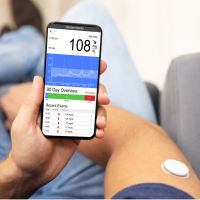A major challenge in the battle against the COVID-19 pandemic is the 'silent transmission' of coronavirus caused – often unknowingly – by asymptomatic individuals. Leveraging mHealth technologies such as mobile apps and wearable sensors, which can help to monitor COVID-19 patients and suspected cases, is a good way to mitigate the effects of the pandemic.
You might also like:Contact Tracing: Looking into Technologies and Adoption
This recommendation is from a Task Force created as part of the Mass General Brigham (MGB) Center for COVID Innovation and is outlined in a paper accepted for publication in IEEE Open Journal of Engineering in Medicine and Biology(Adans-Dester et al. n.d.). The group consists of experts in the use of electronic Patient-Reported Outcomes (ePRO), wearable sensors and digital contact tracing technologies.
In the context of the COVID-19 pandemic, ePRO systems are used to collect self-reports of symptoms. Wearable sensors can capture physiological data (heart rate, body temperature) and detect abnormalities commonly observed in COVID-19 patients. Monitoring individuals wearing these sensors helps with detecting infection and predicting exacerbations – if any – in patients with mild symptoms.
Contact tracing apps, meanwhile, are useful in identifying persons who might have come in contact with someone who tested positive for COVID-19.
Data from these digital/mHealth tools could be aggregated and utilised as input to a "probabilistic model" which, according to the Task Force, can estimate the likelihood of infection on an individual basis and thus prioritise diagnostic testing accordingly.
The Task Force highlights the need to develop algorithms for translating ePRO data into actionable items. Specific algorithms are also required to identify trends and deviations from normative data in the physiological variables monitored using wearable sensors.
"We believe that combining these technologies into an integrated, holistic mHealth solution would provide the opportunity to deploy an end-to-end solution incorporating tools for screening, risk profiling, achieving early detection, generating referrals for testing, tracking infections, tracking isolation management/quarantine, assuring social distance compliance, proving remote care, and tracking recovery," according to the Task Force.
Digital innovations, such as this COVID-19 prediction model, will help to be better prepared in addressing the challenges of future surges of COVID-19 cases and to minimise the effects of future pandemics on healthcare systems, the Task Force points out.
Image credit: DragonImages via iStock
References:
Adans-Dester CP et al. (n.d.) Can mHealth Technology Help Mitigate the Effects of the COVID-19 Pandemic? IEEE Open Journal of Engineering in Medicine and Biology. doi: 10.1109/OJEMB.2020.3015141



























